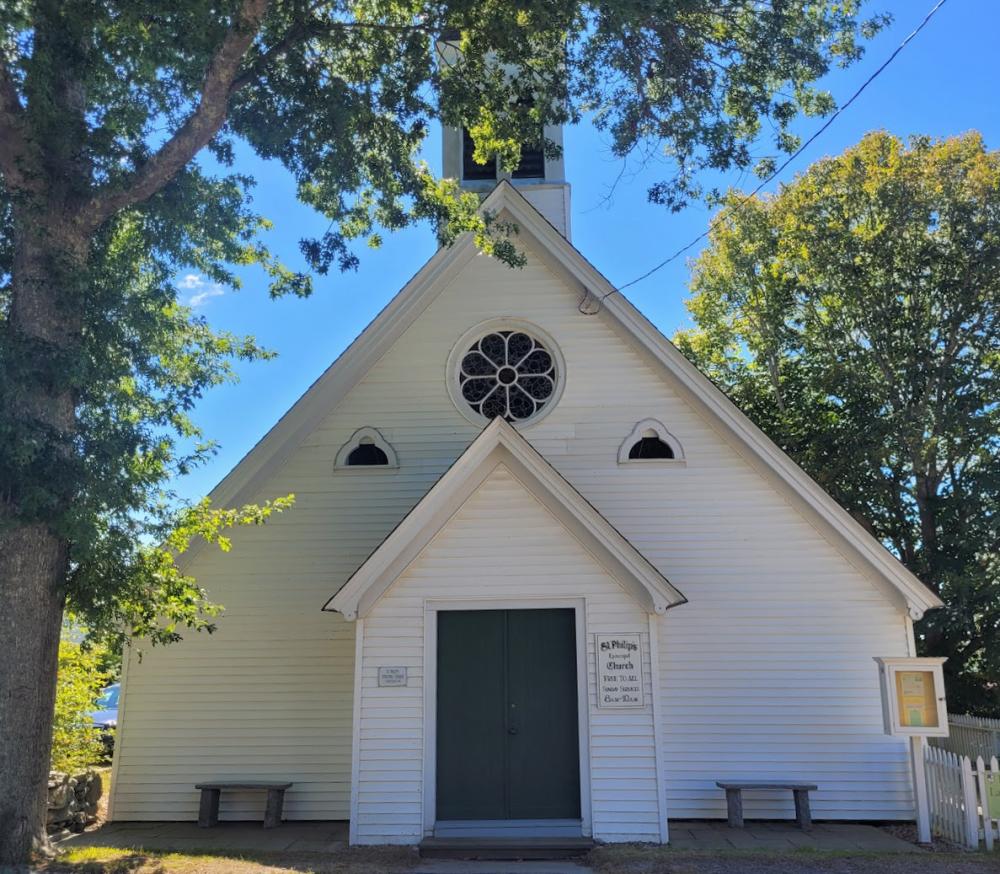Hallelujah! St. Philip’s Episcopal Church concludes 141st year of summer tradition
MATTAPOISETT — St. Philips Episcopal Church has withstood the test of time for 141 years. Protected from hurricanes and still standing tall after over the century, the small church continues its unique tradition of seasonal services.
Just over 140 years ago, Andrew Oliver, then a professor at the General Theological Seminary in New York, had an idea that has altered church services in Mattapoisett ever since.
He founded St. Philip’s Episcopal Church, a seasonal church open only in the summer from the end of June through August.
For the rest of the year, the doors remain closed.
“It was largely for the summer community, who was basically a homogenous bunch, and so it was a church away from home for them,” said Ruth Oliver Jolliffe, Oliver’s great granddaughter.
Oliver’s first cousin had been married to Thomas Parsons, who lived next door and owned the land from the beach to the road.
“He prevailed on [Parsons] to give him the land to build it on,” Jolliffe said.
Not only would Parsons give the land, but he would also have a barn built closer to the water to protect the church in hurricanes.
Before the church was built, summer residents, who were from primarily Boston and New York, worshipped at the Congregation Church. When St. Philip’s Episcopal Church opened its doors in 1884, it became their go-to.
Clergy members have been visiting St. Philip’s Episcopal Church ever since, including Reverend Jeffrey Paull Cave, who just retired after preaching in the summer series for 50 years.
“After I was ordained in 1965, the people here started inviting me to come up and take services,” said Cave, who is a member of the Diocese of Atlanta. “I came here largely because my college roommate lived next door at that point.”
Not much has changed in Cave’s 50 years of preaching, nevermind over the course of the church’s 141-year history.
The church has been using the 1928 Book of Common Prayer ever since it was published.
“It has lovely, almost Elizabethan, language, and so it sort of grabs your attention as you go through it, because it’s very poetic and very powerful,” Cave said.
Robert Iredell, who has been attending St. Philip’s since the mid-80s, said that by using the 1928 Book of Common Prayer, the gospels and the readings are the same every year, which he called a “nice thing.”
“In the year round churches, they do the ‘79 book or even a new one now, and so the readings change every three years,” he said. “Here we get to know them.”
According to Jolliffe, the priests like participating in the series, with many returning each year.
“Once they’ve been here, they want to come back, which must mean something,” she said.
Iredell said knowing that the church has been persisting for 141 years “makes you feel like you’re part of a real history here.”
Jolliffe called the church a “very plain, simple church.”
“We don’t have any doodads around.” she said.
Cave said that despite the church being “tiny,” it’s “laid out like a great cathedral.”
He pointed out that it has side aisles, a Paschal candle, a pulpit, a lectern and a font in the shape of a giant clam shell.
Iredell said the building has a nautical feel that honors Mattapoisett’s history with the sea.
“If you turn it upside down, it looks like a ship,” he said of the roof. “They call that a nave.”
A stained glass window behind the altar depicts Saint Philip, who was a fisherman and an apostle, with a fishing net, as well as images showing Mattapoisett’s history and what life was like in town.
Above the church’s entrance is a rose window, given to the church in memory of Jolliffe’s great uncle who died at sea.
For Iredell, St. Philip’s Episcopal Church’s simplicity is “just the essence of going to church.”
He said, “It’s such a beautiful little chapel, and you feel connected to a lot of things that happened in the past, and it was just that sort of charming place to be.”

















